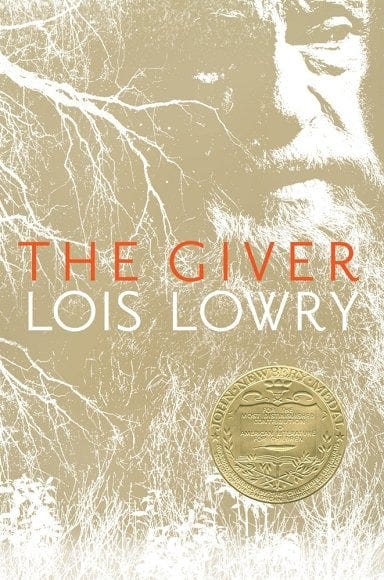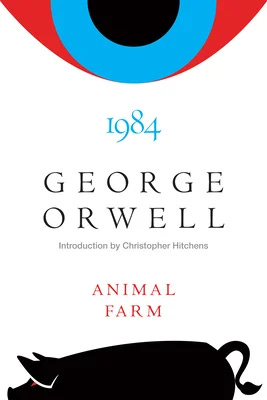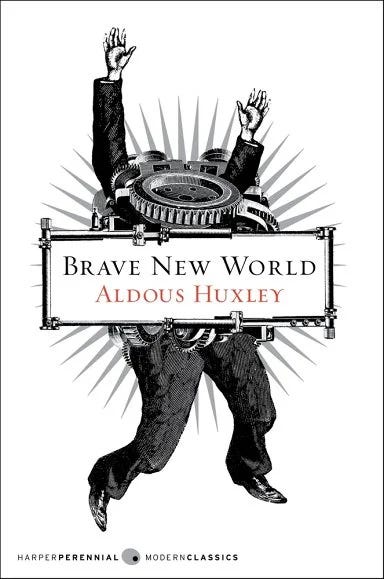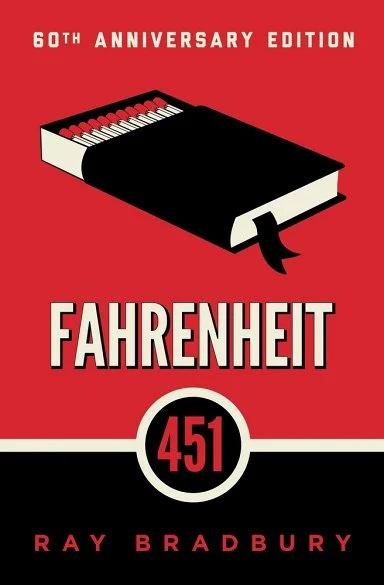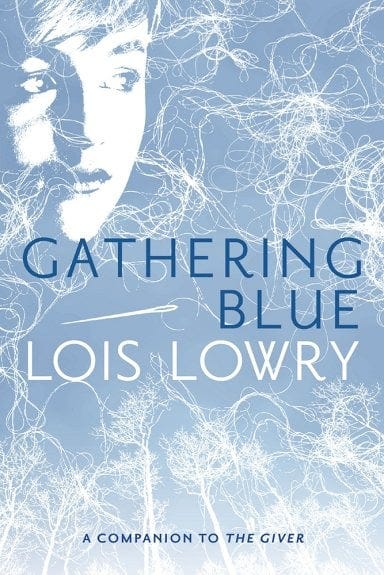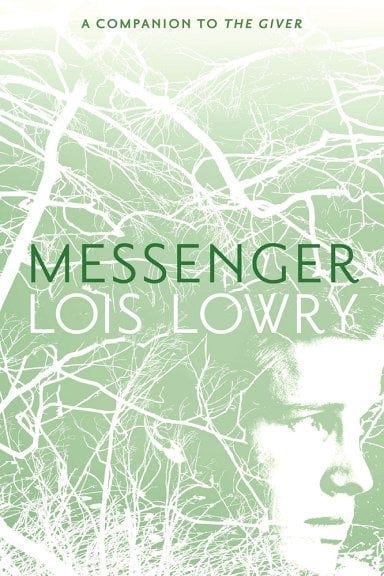I read The Giver1 for the first time when my kids were teenager (as it had not yet been published when I was in high school). I was surprised recently to find out that there are (now) four books in The Giver world. Knowing that Lois Lowry’s birthday was coming up on March 20th, I decided to read 5 of her books, including what is now called The Giver Quartet.2
The Giver, 1993
The Giver is a book that belongs to the club of classic must-read dystopians, like 19843, Brave New World4, and Fahrenheit 4515. It is the story of a boy, named Jonas, who lives in a tightly regulated community where no one is allowed to make decisions, lest they make the wrong ones. In Jonas’ coming of age ceremony, he is abruptly shown a world he never knew existed and he starts to question everything he has ever known. In the process of awakening, he is faced with an understanding which gives him little choice but to take drastic action.
I enjoyed re-reading this book as the world has changed so much since I last read it. There are some interesting parallels, in my opinion, which has made the book become even more relevant. There are a lot of things which are implied in the book, as the rest of the series. This allows for the reader to figure things out for themselves without need to give graphic details. (This is especially true in Son, where Lowry touches on some really complex issues worthy of debate and discussion, without the use of graphic descriptions.)
One of the themes in The Giver, is the taking of “pills” and other medications that are used to take away any pain and dampen perceptions, feelings, and hormonal swings. It seems to also make them incapable of sensing colors. As an interesting aside, on X there is a photograph of one of the astronauts before and after being stuck in space for 9 months. Many of the comments seem to indicate that the only thing people are observing is that the astronaut did not have hair dye in space. I wonder if they are also on some form of pills which alter their perceptions and make them incapable of noticing details. To me, the woman has clearly aged quite drastically: her skin has greyed along with her hair, the rings under her eyes look darker, significantly more liver spots, and the nice, vibrant pink has turned almost translucent puffiness. Her eyes show a gratitude I can only begin to imagine. It is clearly the same astronaut, yet it is clearly not the same woman.
Being part of the community where Jonas grew up, would have been not noticing the differences…or if having them, then being compassionately “released.”
Gathering Blue, 2000
Gathering Blue6 is the second book in the series and seems at first to be totally unrelated to the first. We are introduced to our main character, Kira, who has both a special gift, like Jonas, except that she also has a severe physical disability which causes her to struggle to walk. In Kira’s community, those with disabilities or malformations of any form are not allowed to be part of the community, the same as in Jonas’s community; however, Kira’s community functions via outright cruelty, lies, deceptions, and anarchical tyranny. Kira faces many trials and unknowns, yet Lowry masterfully gives us clues, so that we the readers are able to figure out alongside Kira some of the mysteries as they unravel, even leaving us with a nice surprise ending.
One of the interesting components of Kira’s world is that age is shown through the number of syllables in a person’s name. Children are called by a single syllable. Around puberty, they are given a second syllable. As they come of age, marry and are parents, they acquire a third syllable. Finally, when they reach old age, they are given a fourth syllable. It is this set up which allows us to know the passage of time with the very first word in Messenger.
Messenger, 2004
Though given a brief introduction in Gathering Blue, Messenger7 focuses much of the time on a third community, bringing together both of the first two books. This third community, called Village, is one that came together from those seeking to escape tyranny elsewhere. It is also the story of Forest. Forest is not simply trees, but is a life in and of itself.
Right after I read Messenger, my husband and I went for a hike in a local forest, a forest we have long gone for hikes in and one where we often took our children when they were growing up. As we were walking, I was struck more and more by the lack of life. Yes, it is the beginning of spring here. I wasn’t expecting everything to be bright green, yet it has been many weeks of warm weather. There were no scurrying squirrels, no little chipmunks, no bees, no signs of leaves emerging. There were precisely two redbud trees starting to bud out, 3 deer off in the distance, 1 bird, and one water skipper. Otherwise, only the occasional hiker, earbuds firmly implanted in the ears. The bark of the trees was blotched with gray patches. There were dead trees everywhere, even the young ones. The forest seemed all but dead. Yet, how would anyone notice? They were all in their own worlds, never hearing the bird calls in the first place, much less hearing them when they weren’t there. Even when we went there in the middle of winter, there had been more life and by now, the leaves should have been budding everywhere.
I was really struck by this trip. Perhaps all the more so, since I had just finished reading the book. That is how you know a book is good: it alters your perceptions, makes you have a deeper awareness of the world around you, and really makes you think.
I found Messenger to be quite a gripping story where characters were masterfully created and a great set-up for the fourth book, Son.
Son, 2012
Son8 brings us full circle and gives the entire story a depth I found quite thought-provoking. The story gives us a parallel re-telling of The Giver, but through the eyes of the Birthmother. I will reiterate at this point that the story does touch upon some mature concepts (e.g. artificial insemination), but are done more through implication rather than graphic explanation. The book also juxtaposes cultural acceptance and society expectations towards pregnancy outside of marriage (as is the case in The Giver) as well as love, marriage, birth, and death. I think it is also important to point out that this book, especially, was a tribute to Lois Lowry’s son, who died tragically in an airplane crash.9
Son is actually three books in one. Each book gives further depth to the characters and the Giver world. We are introduced to a fourth community. This community in some ways is the closest to our own world a few hundred years ago. Yet, through hardship, sacrifice, and love, we move into the final part of the story, which is the most thought-provoking and heart-wrenching, in my opinion. Lowry presents us a Faustian bargain and in the process, the full cycle of the story is completed.
Summary
There any number of topics within these book which could lead to some interesting conversations. I would suggest the books for mature middle-schoolers to high school and on up. There are a number of Springboards in these books as well, like embroidery, dying thread, herbs, herbalism, and boatmaking.
Overall, I was really impressed by the quartet. I think the first books was perhaps the best, yet by the end of the final book, I could not imagine not knowing the full story that all four books came to tell. I’ve found the books to be quite thought-provoking and have spent much time since finishing them pondering. It has also shifted my perspective in how I see the world around me, making me observe the world from the extra perspective that each of the characters in The Giver world gave me. For that, I respect Lois Lowry and her abilities as a masterful story-teller!
Have you read these books? If so, what are your thoughts?
Please note: Anywhere there is a picture of a book, I have included a link to Bookshop. org. If you follow the link and choose to purchase the book, then I earn a small commission. I include the link for further information; however, if you would like to buy the book anyway, it would be awesome and amazing if you would be so kind as to allow me to make a buck or two in the process.
I have noticed several writers here on Substack who write about the loss of their children. I add this note in as word of encouragement to say that channeling all of your grief, all of your loss and added understanding of the depth to which tragedy and emotions may take us, does have a profound impact upon all of us by helping guide the rest of us deeper understanding, compassion, and connection. I found the themes interwoven throughout these stories to be deeply moving. We need to hear what you need to share. Please don’t stop writing!






